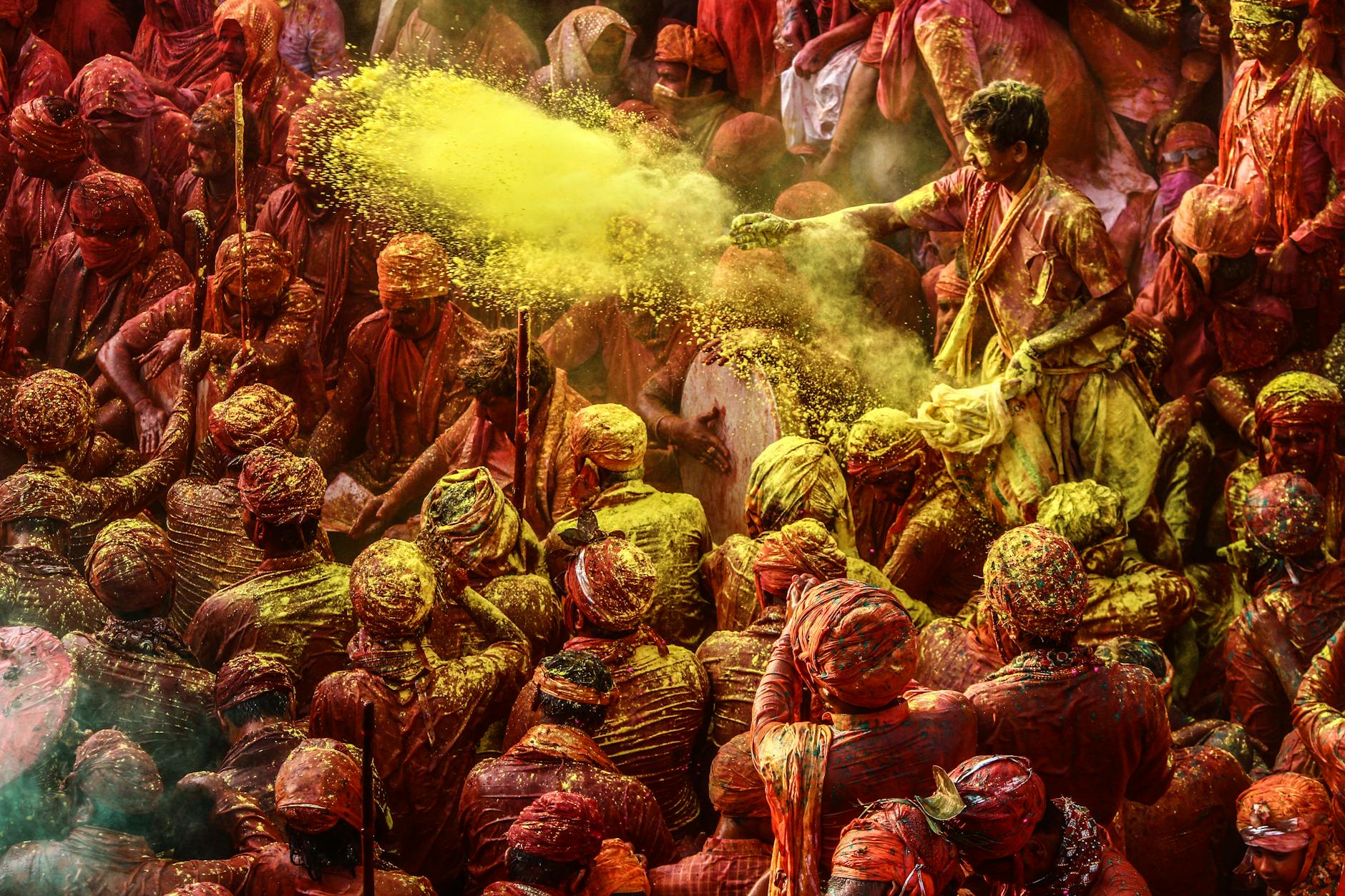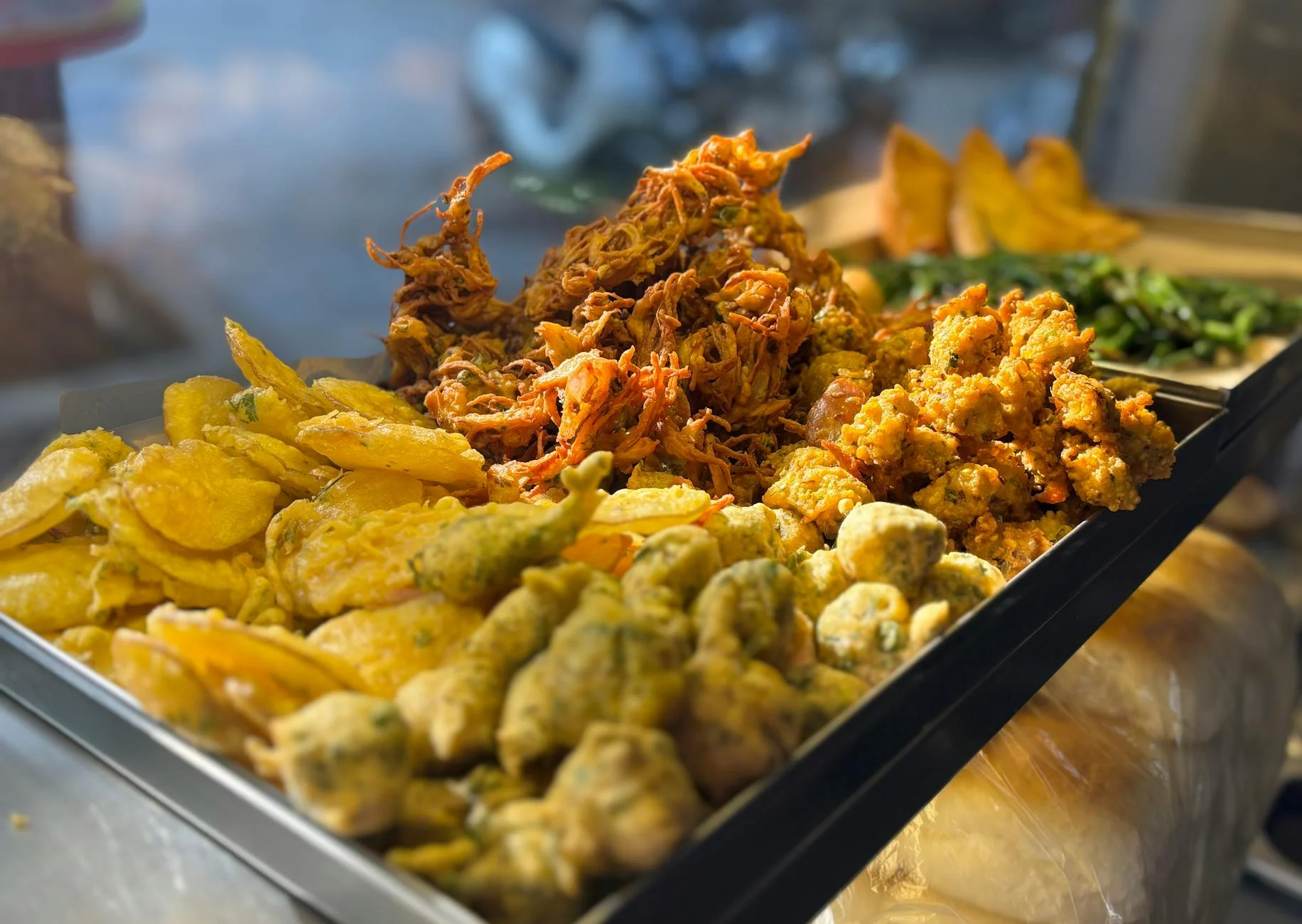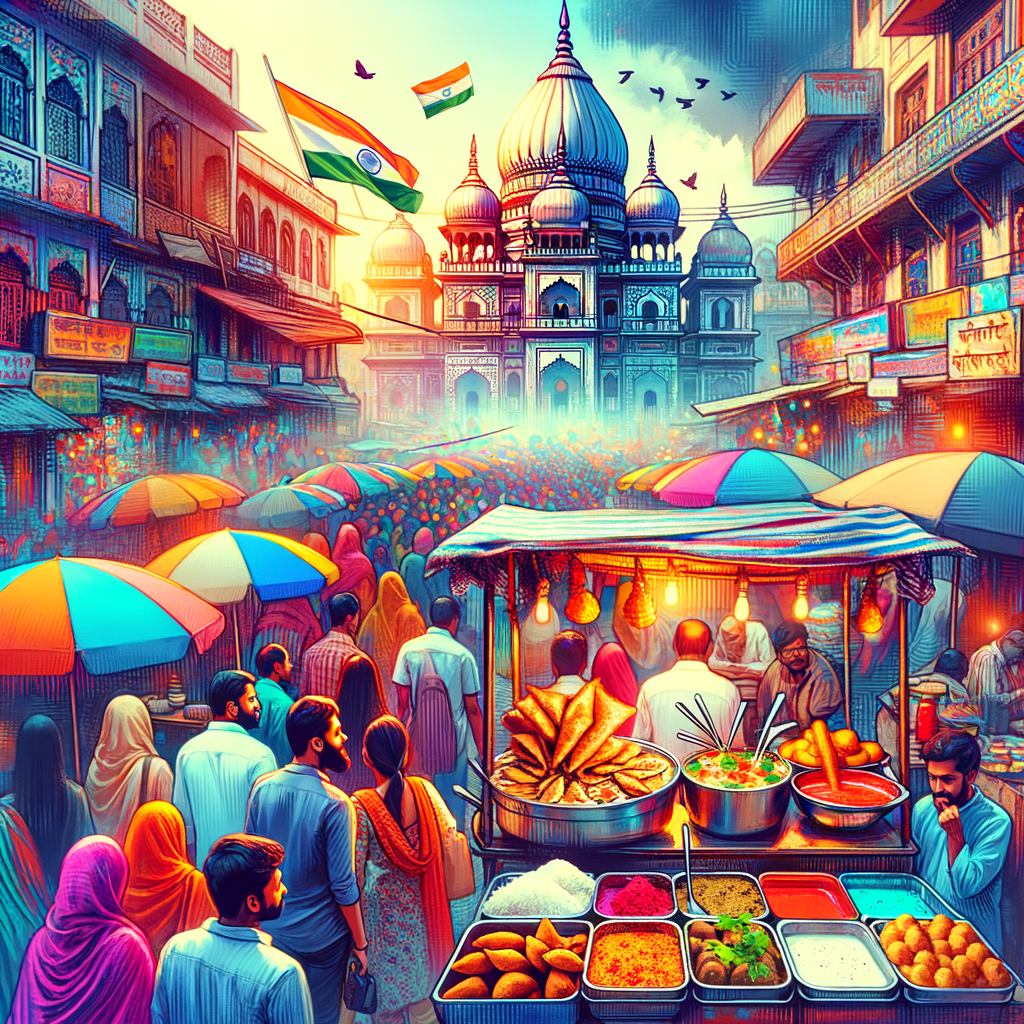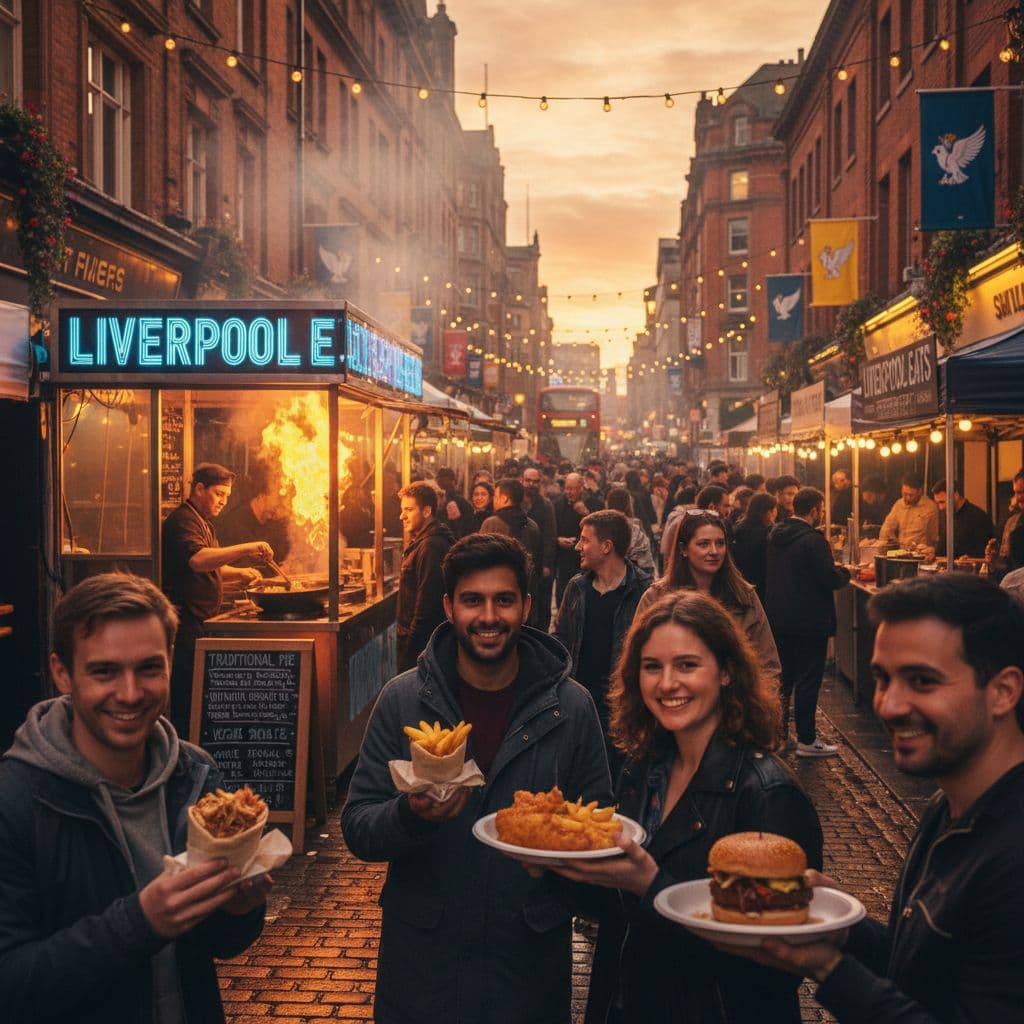Discover the Rich Tapestry of Indian Street Food [Updated 2024]
Craving an adventure for your taste buds? Street food in India promises an unforgettable culinary journey. Bursting with flavors, colors, and textures, it’s more than just food—it’s a staple of Indian culture. From spicy chaats in Delhi to crisp dosas in Bangalore, every region offers unique delights that draw locals and tourists alike. Ready to explore this diverse and delicious world? Stay with us as we uncover the street foods you can’t miss in India.
The Diversity of Indian Street Food
Indian street food is a treasure trove of flavors and traditions that vary widely across the country. The culinary traditions are as diverse as the country’s culture itself. Let’s explore the unique street food offerings from different regions: North, South, East, and West India.
North Indian Street Food

Photo by Kampus Production
North India is famous for its rich and spicy street foods which are a true reflection of its vibrant culture.
- Chaat: One of the most popular street foods in North India is Chaat. It includes a variety of snacks like Aloo Tikki, Pani Puri, and Dahi Bhalla. These dishes are packed with tangy, spicy, and sweet flavors that offer a burst of taste in every bite.
- Parathas: In the streets of Delhi and Punjab, Parathas are a staple. These are flaky, buttery flatbreads stuffed with various fillings like potatoes, paneer (cottage cheese), or mixed vegetables. They are often served with chutney or curd.
- Golgappas: Also known as Pani Puri in other parts of India, Golgappas are crispy, hollow puris filled with spicy water, tamarind chutney, and a mix of chickpeas and potatoes. They are incredibly popular and are often eaten in a competitive style, with people seeing who can eat the most!
South Indian Street Food
South Indian street food is lighter and often features fermented batter dishes that are unique in their preparation and taste.
- Dosa: A thin, crispy pancake made from fermented rice and urad dal batter. Dosas come with a variety of fillings and are often served with coconut chutney and sambar. From Masala Dosa filled with spicy potato mix to Paper Dosa that is super crispy, each variety has its own fan base.
- Idli: Soft, fluffy rice cakes made by steaming fermented rice and urad dal batter. Idlis are usually served with sambar and chutneys. Their mild taste makes them a favorite breakfast item across South India.
- Vada: These are savory doughnuts made from urad dal, and they are crispy on the outside and soft on the inside. Vadas are often served with sambar and chutney, making them a perfect snack or breakfast option.
East Indian Street Food
East India boasts a variety of street foods that are both unique and flavorful, often sweet and savory.
- Puchka: Known as Pani Puri or Golgappa in other regions, Puchka has a slightly different preparation here, with the filling being spicier and tangier. The puris are filled with spicy tamarind water, mashed potatoes, and chickpeas.
- Mishti Doi: A sweet yogurt that is a staple in Bengali cuisine. Mishti Doi is prepared by fermenting thickened milk and sugar. It is flavored with cardamom or saffron, creating a delightful dessert.
- Kathi Rolls: Street food from Kolkata, Kathi Rolls consist of parathas filled with spicy chicken, egg, or vegetable fillings. They are easy to eat on the go, making them a popular quick meal option.
West Indian Street Food
The street foods of Western India are known for their bold flavors and are often a blend of spicy, tangy, and sweet tastes.
- Vada Pav: Often called the Indian burger, Vada Pav consists of a spicy potato fritter (vada) sandwiched between a bun (pav) and served with chutneys and fried green chilies. It’s the go-to snack for Mumbaikars.
- Pav Bhaji: A spicy vegetable mash (bhaji) served with buttery, toasted buns (pav). Pav Bhaji is a favorite for dinner or a hearty snack and is known for its robust flavors.
- Dhokla: A fermented steamed cake made from rice and chickpea batter, Dhokla is spongy and slightly tangy. This Gujarati snack is often served with green chutney and garnished with mustard seeds and coriander.
Indian street food is a culinary journey that offers a taste of the country’s rich cultural diversity. Each region brings its own unique flavors and cooking styles that make street food an integral part of the Indian culinary landscape.
Iconic Street Food Dishes
Indian street food is renowned for its vibrant flavors and diverse offerings. From tangy to spicy, there’s something for every taste bud. Below, we will dive into some iconic street food dishes that are a must-try when exploring the streets of India.
Pani Puri
 Photo by Pixabay
Photo by Pixabay
Pani Puri is one of the most popular street foods enjoyed by people of all ages. These small, crispy balls are filled with a spicy and tangy water known as “pani,” along with tamarind chutney, boiled potatoes, and chickpeas. Typically served on small plates, the vendor makes each puri on the spot, ensuring they are as fresh and crunchy as possible.
- Components:
- Puri: Hollow, crispy balls made of semolina.
- Pani: Tangy water made with tamarind, mint, and spices.
- Filling: Boiled potatoes, chickpeas, and spices.
The experience of eating Pani Puri is unmatched. You pierce a hole in the puri, fill it with the pani and stuffing, and pop the entire thing into your mouth. The burst of flavors is truly a delight!
Bhel Puri
 Photo by Atul Somani
Photo by Atul Somani
Next on the list is Bhel Puri, a delicious mix of puffed rice, vegetables, and tangy tamarind chutney. This dish is a staple in Mumbai but loved by everyone across the country. It is typically served in a paper cone and eaten with a spoon.
- Ingredients:
- Puffed rice.
- Chopped onions, tomatoes, and boiled potatoes.
- Sev: Thin, crispy noodles made from chickpea flour.
- Tamarind chutney and green chutney for flavor.
The preparation involves tossing all the ingredients together, making sure each element is evenly coated with the chutneys. As you take a bite, the crunchiness of the puffed rice and the burst of tangy and spicy flavors is simply irresistible.
Chole Bhature
 Photo by Yogendra Singh
Photo by Yogendra Singh
Chole Bhature is a beloved dish from Northern India and has quickly gained popularity in other regions as well. It consists of spicy chickpeas (chole) served with fried bread (bhature).
- Origin: This dish has its roots in Punjabi cuisine.
- Components:
- Chole: A spicy chickpea curry made with tomatoes, onions, and a variety of spices.
- Bhature: Soft, fluffy, and deep-fried bread made from refined flour.
The combination of the spicy chickpeas and the soft, slightly crispy bhature makes for a rich, hearty meal. Often served with pickles, onions, and a chilled yogurt drink, Chole Bhature is a favorite comfort food.
Indian street food is a testament to the country’s love for bold flavors and diverse culinary traditions. Whether you are savoring the spicy pani puri or enjoying a hearty plate of chole bhature, each dish tells a story of its own. So the next time you find yourself on the streets of India, make sure to indulge in these iconic street food dishes for an unforgettable experience.
Health and Safety Considerations
When exploring the vibrant world of street food in India, it’s essential to keep health and safety in mind. Enjoying delicious street food is a delight, but ensuring it’s safe to eat is equally important.
Identifying Clean Street Vendors
Choosing a clean street vendor can make a big difference in your food experience. Here are some tips to help you pick the right one:
- Look for a Crowd: Busy vendors are often busy for a reason. High turnover of food means it’s likely fresher.
- Cleanliness of the Vendor: The vendor should appear clean and wear gloves or use utensils. Their workspace should also be tidy.
- Food Storage: Check how the food is stored. Refrigerators and covered containers are good signs.
- Cooking Practices: Observe how the food is cooked. Freshly prepared food is usually safer than pre-cooked or reheated items.
- Running Water: Vendors with access to clean running water are more likely to maintain hygiene standards.
- Customer Reviews: If available, read customer reviews or ask locals for their recommendations.
 Photo by Laura James
Photo by Laura James
Common Foodborne Illnesses
Street food can be a tasty adventure, but it does come with some risks. Being aware of common foodborne illnesses and how to avoid them can keep you safe.
- Bacterial Infections: Bacteria like E. coli and Salmonella can cause stomach cramps and diarrhea. Eating well-cooked food and avoiding raw items can reduce risks.
- Viral Infections: Viruses like norovirus can spread through contaminated food. Hand hygiene is key. Always wash your hands before eating.
- Parasitic Infections: Parasites can lead to serious health issues. Make sure meat is fully cooked and avoid street food in areas with poor sanitation.
- Food Poisoning: Symptoms like nausea, vomiting, and headaches can occur. Stay hydrated and seek medical attention if severe.
Reducing the risk of these illnesses involves a few simple precautions:
- Wash Your Hands: Always use soap and water, or hand sanitizer if necessary.
- Peel Fruits: If eating fruits, opt for ones you can peel yourself.
- Drink Bottled Water: Tap water can be risky. Stick to bottled or purified water.
- Check Food Temperature: Hot food should be served hot, and cold food should be cold.
For more details on food safety tips, check out these food safety guidelines by the World Health Organization.
By keeping these health and safety considerations in mind, you can have a delicious and safe street food experience in India. Happy eating!
Street Food and Cultural Significance
Street food is more than just a delicious meal on the go in India. It embodies the rich cultural diversity and social traditions of the country. Let’s explore how street food plays a significant role in the lives of Indians through two key aspects: it as a social experience and its presence in festivals and events.
Street Food as a Social Experience
Street food in India is not just about satisfying hunger; it’s a lively social experience. The streets bustle with activity as vendors serve up their specialties, creating an atmosphere that encourages people to gather, chat, and enjoy the food together.
Crowded, vibrant food stalls often become the backdrop for conversations among friends, family, and strangers alike. It’s a place where people from different walks of life come together, bridging social gaps with shared experiences over plates of pani puri or chole bhature. Street food stalls foster a sense of community, often becoming the heart of local neighborhoods.
Moreover, the act of eating street food is often a communal activity. For example, sharing a hot plate of samosas or bhajjis with friends can be a bonding experience. It isn’t just about the food; it’s about the memories created and stories shared over a meal. In this way, street food stalls act as social hubs, weaving a rich tapestry of human connections throughout India’s cities and towns.
 Photo by Yogendra Singh
Photo by Yogendra Singh
Street Food Festivals and Events
Street food is celebrated through numerous festivals and events across India, showcasing the country’s culinary art. These festivals are not just about indulging in tasty dishes but also about embracing cultural heritage and local traditions.
One of the most popular street food festivals is the National Street Food Festival in Delhi, which attracts food enthusiasts from all over the country. The festival features a wide array of traditional and modern street foods, offering a gastronomic tour of India in one place.
In Kolkata, the Ahiritola Yuva Samity Durga Puja is renowned for its food stalls offering delectable Bengali street foods such as phuchka and jhal muri. Another notable event is the Mumbai Street Food Festival, where the bustling streets come alive with flavors of vada pav, pav bhaji, and bhel puri.
These festivals are more than just culinary events; they are cultural experiences where attendees can immerse themselves in the local ambiance, music, and traditions. They provide an opportunity to explore the diverse Indian cuisine and appreciate the rich cultural fabric of the country.
By celebrating street food through these events, India pays homage to its culinary heritage and community spirit, making it an integral part of the cultural landscape.
Street food in India is not just sustenance; it’s a way of life, bringing people together and celebrating cultural diversity. Whether you find yourself at a busy food stall or a grand street food festival, you are experiencing a unique blend of flavors and traditions that define India.
The Future of Street Food in India
Indian street food is a vibrant and essential part of the country’s culture. But how will it evolve in the future? Let’s explore some emerging trends and technological advancements that are shaping the street food landscape in India.
Fusion Street Food Trends
 Photo by egg roll
Photo by egg roll
One exciting trend is the fusion of traditional street food with modern flavors. Vendors are mixing classic Indian dishes with international cuisines, creating unique and mouth-watering combinations.
Some popular fusion trends include:
- Tandoori Momos: This combines the classic Tibetan dumplings with Indian tandoori flavors.
- Paneer Tacos: Bringing together Mexican tacos with Indian paneer, offering a spicy, flavorful twist.
- Pav Bhaji Fondue: A blend of the classic Indian street food Pav Bhaji with the Swiss Cheese Fondue, served with bite-sized bread pieces for dipping.
These fusion dishes are not only delicious but also draw in a diverse crowd eager to try something new and exciting. They are a testament to how food can bring different cultures together, all while staying true to traditional roots. Learn more about fusion foods in India.
Technology and Street Food
Technology is playing a significant role in transforming the street food scene in India. From food delivery apps to online payment systems, these advancements are making it easier and more convenient for everyone involved.
Food Delivery Services
Food delivery services like Swiggy and Zomato have revolutionized how people enjoy street food. You no longer need to visit the vendor; you can order your favorite street food from the comfort of your home.
Benefits of food delivery services include:
- Convenience: Easily order food without leaving your home.
- Variety: Access to a wide range of street food vendors.
- Safety: Contactless delivery options, especially important during health crises.
Digital Payments
Digital payment methods are becoming more common among street vendors. This shift not only makes transactions quicker but also safer.
Advantages of digital payments:
- Speed: Faster transactions without the need for cash.
- Security: Reduced risk of theft or loss.
- Record Keeping: Easier tracking of sales and earnings.
Learn more about the impact of technology on food delivery services.
The integration of technology helps street food vendors reach a broader audience and ensures they keep up with modern demands. As technology continues to advance, we can expect even more innovations that will further enhance the street food experience in India.
Stay tuned for more sections exploring other aspects of Indian street food!
Conclusion
Street food in India is a feast for the senses. The rich variety of flavors, aromas, and textures offer an unparalleled culinary experience. Each regional specialty tells a story of its heritage and culture, making every bite a journey through the local landscape.
Embrace the adventure and explore these vibrant dishes. Whether it’s the spicy tang of Pani Puri or the sweet warmth of Jalebi, Indian street food guarantees a memorable encounter.
Ready to dive into this gastronomic adventure? Start your culinary journey today and share your favorite street food finds with the community. The flavors of India await you!






Leave a Reply